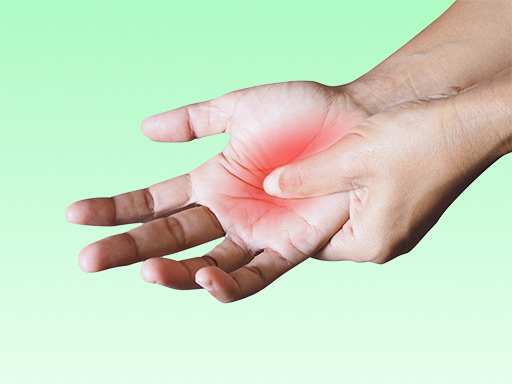Biofeedback Pain Management For Your Patients

What Is Biofeedback?
Biofeedback uses sensors placed on the skin or fingertips to monitor and relay information about certain bodily functions. These functions include:
- Meridian resistance
- Heart rate
- Blood pressure
- Temperature
- Respiration or breathing
- Eccrine sweat gland activity
- Muscle contractions
- Brain and nervous system
A stressed patient may show signs of increased respiration and rapid heart rate. The biofeedback shows these increases and allows your patient to use breathing and relaxation exercises to calm and slow their respiration and heart rate.
In the same way, muscle contractions or spasms in some regions of the body can be detected, and the patient can focus on these areas to relax the muscles and relieve pain. Brainwave activity can also help patients control other types of pain such as headaches and migraines.
The Science Behind Biofeedback Pain Management
The concept behind biofeedback is to provide patients with information and learn to control their physiology. This control allows them to either improve some functions or reduce symptoms such as pain.
Pain can occur from either an internal or external source. The latest scientific studies have found that factors can modify the pain response to these sources. One of these factors is a poorly regulated nervous system. Patients with a poorly controlled nervous system have a more significant response to environmental stresses and therefore have lower pain thresholds and are more likely to respond with pain. As a result, these patients often suffer from chronic pain.
If a poorly regulated nervous system can increase pain, then controlling the nervous system can reduce pain. Biofeedback provides the necessary information for patients to better regulate their nervous system functions and, therefore, reduce the pain they are experiencing.
An example of how biofeedback works can be taken from a study conducted on children suffering from migraine headaches. The biofeedback information is primarily based on temperature measurements. The children were asked to think about ways to warm their hands and to practice this thought process. Temperature increases as well as a reduction in migraine headaches resulted.
Temperature is such an effective measurement for pain due to the fight or flight response. The body responds to stress by withdrawing circulation from the peripheral tissues and sending it to the heart, lungs, major muscles, and brain to get ready to fight or flee. When the hands are cold, focusing on warming them tells the brain to increase circulation to these points, bypassing the fight or flight response, reducing the stress levels in the body. Thus, it directly impacts stress-induced pain, which has either internal or external causes.


How Does Biofeedback Technology Work?
Biofeedback technology like BioScan is a Galvanic Skin Response testing system. BioScan provides either or both a Meridian Stress Assessment (MSA) and Stress Resistance Testing (SRT). In addition, BioScan includes information on how a patient can manage stress and what may be the underlying cause of that stress.
The data gathered from BioScan integrates into graphs. These graphs ensure that the information is easy to understand for both the practitioner and the patient.
With biofeedback pain management, stress assessment and testing are conducted to improve pain management. The feedback is used to help the patient better understand how their autonomic nervous system responds to stresses that cause pain and then provide them with tools to assist them in regulating the functions to reduce pain.
What Techniques Are Used In Biofeedback Pain Management?
Four main techniques are used to help reduce pain:
– Deep breathing exercises to decrease stress and relax the mind and the body. Deep breathing has also been found to improve the lymphatic function of the body to have a detoxifying effect. In addition, the technique can lower blood pressure, increase energy, and strengthen immunity.
– Progressive body tension relaxation teaches your patient to tense and relaxes specific muscle groups. This is the ideal technique to relieve pain related to muscles caused by injuries or stress-induced.
– Guided imagery which is allowing a patient to focus on an image that is calming and relaxing. It can also be more specific, as in the example above, where children were taught to imagine ways to warm their hands.
– Mindfulness meditation focuses on thinking positive thoughts and letting go of negative thoughts or energy.
The immediate access to this data allows you and the patient to see that the technique is working and how it works to help regulate autonomic nervous system functions.

What Types Of Pain Conditions Can Be Addressed?
The technology is specifically beneficial for patients with the following types of pain:
- Abdominal pain
- Phantom limb pain
- Neck and shoulder pain
- Jaw pain or temporomandibular joint disorder (TMD)
- Lower back pain
- Fibromyalgia
- Migraines and tension headaches
Is Biofeedback Technology FDA Cleared?
The BioScan device has been FDA cleared. The most significant benefit of the device is that it is entirely non-invasive while providing data on a variety of autonomic nervous system functions. In addition, the device cannot cause any harm to a patient, and the patient will feel no discomfort or pain while the device performs its assessments and testing.
Do You Need To Be Licensed To Practice Biofeedback Pain Management?
No additional qualifications, certifications, or licensing is legally required to provide biofeedback pain management. However, practitioners should undergo specialized training on using the specific device, interpreting the data, and learning the different techniques used in combination with the biofeedback device.
Can Biofeedback Be Used In Combination With Other Modalities?
Biofeedback can safely be used in combination with any other modalities because it is non-invasive, and there are no side effects or interactions with pharmaceuticals. BioScan can also be used stand-alone.
Manage Patient Expectations With Biofeedback Pain Management
Biofeedback aims to offer a long-term solution to pain relief. However, learning to regulate your own body can take some time. In general, a patient should be able to begin self-regulating after several biofeedback sessions.
Patients who have received biofeedback for an extended period and can better regulate autonomic functions report a small to considerable reduction in pain. However, it is essential to get informed consent from patients that pain relief is dependent on how well your patient can self-regulate autonomic functions. Furthermore, that pain reduction will continue to improve as time goes by.
How Can Pain Management Benefit Your Medical Practice?
The fact that biofeedback offers an effective alternative for pain management can be of great benefit to your patients in various ways. First, it can provide them with the ability to manage their pain better, free of pharmaceuticals and damaging side effects.
Many patients who cannot find pain relief by using pain medications have found alternatives like biofeedback to be more successful in helping them manage their pain.
BioScan also provides your patients with the ability to take more control over their bodies and, therefore, their health. Understanding that they can use techniques to regulate functions that they believed they had no control over can be an enormous relief while helping them manage their pain and the underlying condition.
